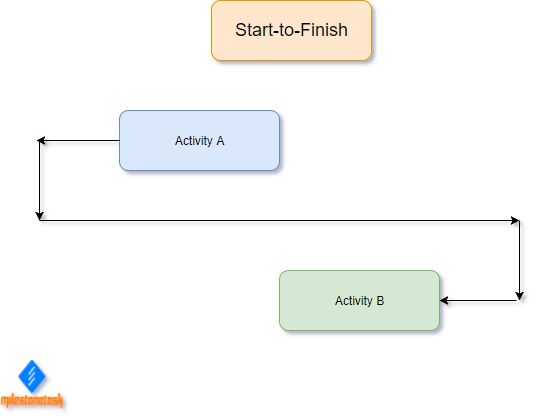 https://i0.wp.com/milestonetask.com/wp-content/uploads/2023/10/waterfall-method-rafiki.png?resize=300%2C200&ssl=1 300w, https://i0.wp.com/milestonetask.com/wp-content/uploads/2023/10/waterfall-method-rafiki.png?resize=150%2C100&ssl=1 150w, https://i0.wp.com/milestonetask.com/wp-content/uploads/2023/10/waterfall-method-rafiki.png?resize=768%2C512&ssl=1 768w, https://i0.wp.com/milestonetask.com/wp-content/uploads/2023/10/waterfall-method-rafiki.png?resize=720%2C480&ssl=1 720w" sizes="(max-width: 800px) 100vw, 800px">
https://i0.wp.com/milestonetask.com/wp-content/uploads/2023/10/waterfall-method-rafiki.png?resize=300%2C200&ssl=1 300w, https://i0.wp.com/milestonetask.com/wp-content/uploads/2023/10/waterfall-method-rafiki.png?resize=150%2C100&ssl=1 150w, https://i0.wp.com/milestonetask.com/wp-content/uploads/2023/10/waterfall-method-rafiki.png?resize=768%2C512&ssl=1 768w, https://i0.wp.com/milestonetask.com/wp-content/uploads/2023/10/waterfall-method-rafiki.png?resize=720%2C480&ssl=1 720w" sizes="(max-width: 800px) 100vw, 800px">Sequence activities is the process to establishing logical relationship among schedule activities. Hence, while developing the project schedule it is imperative to identify all project activities that relate to project success. Further it is essential to establish logical relationship that exist among various identified schedule activities. A logically correct schedule network diagram can help the project team to concentrate on sequence of critical project activities. Hence, this post intends to look into various tools and techniques that are available to sequence various project activities.
Table of Contents
Predecessor & Successor Activity
Establishing logical relationship among schedule activities is the process of knowing which activity comes first and which activity follows it. In other words, it helps to know predecessor and successor activities. However, before knowing how to logically link schedule activities it is important to understand predecessor and successor activities.
Predecessor Activity: It is an activity that comes before a dependent activity in a project schedule.
Successor Activity: It is an activity that comes after a dependent activity in a project schedule.

In the figure above, activity P is predecessor activity of A and activity S is successor activity of A. However, activity A is also the successor activity of P and predecessor activity for S
Tools to Sequence Activities:
The following are the four dependencies used to sequence activities:
Finish-to-Start (FS)
It is a logical relationship in which a successor activity (Activity B) cannot start until a predecessor activity (Activity A) has finished. It is the most commonly used dependency in scheduling software to establish logical relationship.

Start-to-Start (SS)
It is a logical relationship in which a successor activity (Activity B) cannot start until a predecessor activity (Activity A) has started.

Start-to-Finish (SF)
It is a logical relationship in which a successor activity (Activity B) cannot finish until a predecessor activity (Activity A) has started.

SF has good use when you have to wait on an external source to complete the predecessor task. This relationship gives you the start date of the predecessor activity. For e.g. this relationship helps you to know when you have to place purchase order (A) so that you can supply the equipment (B) on time.
Finish-to-Finish (FF)
It is a logical relationship in which a successor activity (Activity B) cannot finish until a predecessor activity (Activity A) has finished.

Sequence Activities Using Dependency Determination:
Project activities may also have following four attributes which helps to sequence activities.
- Mandatory Dependencies
- Discretionary Dependencies
- External Dependencies
- Internal Dependencies
Any two dependencies may be present at the same time in the following manner
- Mandatory External Dependencies
- Mandatory Internal Dependencies
- Discretionary Internal Dependencies
- Discretionary External Dependencies
Mandatory Dependencies
- Also known as Hard Logic or Hard dependencies.
- Legally or contractually required or inherit in the nature of work and involve physical limitations.
- Technical dependency may not be mandatory and are not schedule constraints.
- Project team determines which dependencies are mandatory.
Discretionary Dependencies
- Also known as preferred logic, preferential logic, or soft logic.
- Established based on best practices of an application area or when a specific sequence is desired.
- Improper use may result in arbitrary total float.
- During fast tracking these should be reviewed for modification or considered for removal.
- Project team determines which dependencies are discretionary.
External Dependencies
- Involve relationship between project activities and non-project activities.
- These dependencies are usually outside the project team's control.
- The project management team determines which dependencies are external.
Internal Dependencies
- Involve precedence relationship between project activities and are generally inside project team's control.
- The project management team determines which dependencies are external.
Leads & Lags To Sequence Activities:
Adding Lead and Lags to project schedule is another method to sequence activities.
Sequence Activities Using Lead:
Lead is amount of time the successor activity (B) can be advanced with respect to predecessor activity (A). It is represented as a negative value of lag. For example FS-10 days.
Sequence Activities Using Lag:
Lag is amount of time a successor activity (B) will be delayed with respect to predecessor activity (A). For example it is represented as SS+10 days.

To understand the schedule network analysis process, also read my post
To understand how to analyse a project schedule using critical path method you may also read
For steps involved in critical path analysis you may read the following
Also read the following post for a comprehensive list of project management formulas for pmp examination.
Take the Critical Path Method Quiz
Final word on Sequence Activities Tools & Techniques
To conclude, establishing logical relationship among various project activities is an important step in the schedule development process. Moreover, the four techniques mentioned above help to estbalish this logical relationship. Wrong relationships result in improper identification of critical path and puts the schedule control and resource allocation at risk.


Thanks …
Reblogged this on Atul Gaur.